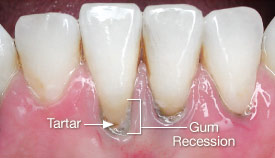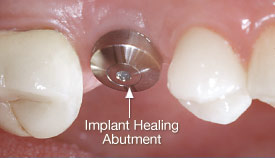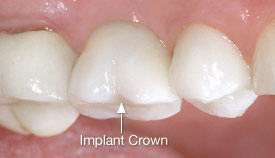Periodontal Surgery
Where Art Meets Science
(Continued)
Contra-indications
It is important for people undergoing surgery to be in general good health and not overly stressed. It is also important to give your dentist/periodontist a full medical history with all current conditions and medications you are taking, including those to which you are allergic. Situations exist medically where it is not advisable for individuals to undergo surgical treatment. These mainly fall into the following categories:
- Uncontrolled periodontal disease
- Smoking and alcohol — can not only make periodontal disease worse, but will delay healing following surgery
- Systemic (bodily) or medical conditions which are uncontrolled, e.g. diabetes, HIV (AIDS), immuno-compromised patients (in whom resistance to disease is diminished), cardiovascular (heart and blood vessel) disease, to name a few
- Medications that can affect periodontal disease or surgery, e.g. aspirin, coumadin which may cause bleeding that is difficult to stop; medications that cause gum overgrowth, e.g. calcium channel blocking drugs used to control cardiovascular disease, other medications used to control transplant rejection, and more
Current Techniques
 |
| Figure 3: This photograph shows the significant tartar accumulation and gum recession. There is also a lack of attached gum tissue. |
 |
| Figure 4: This photograph shows the healing which has occured after tartar was removed and a periodontal plastic surgical procedure repaired the area. |
 |
| Figure 5: This photograph shows a healing abutment that is attached to an implant during the healing phase. |
 |
| Figure 6: This photograph shows the implant permanent crown that was placed onto the implant after the healing abutment was removed. |
| Figures 3 and 4 provided by Dr. James W. Davis Figures 5 and 6 – Implant crown was completed by Dr. Donald Stammer |
Current techniques are based on a sound understanding of wound healing and therefore enhance and maximize the body's healing potential. For descriptive purposes, a rather broad distinction can be drawn between periodontal surgical techniques used to treat:
- Periodontal disease that has resulted in loss of periodontal attachment with pocket formation [Figure 3]
- Aesthetic techniques to re-contour or graft new tissue in cosmetic areas (like the upper front teeth) where there is excessive tissue, or to cover exposed roots where gum tissue has been lost [Figure 4]
- Bone and gum tissue regeneration to develop sites for future implant placement following tooth loss or other prosthetic (false) teeth replacement
- Implant placement to replace missing teeth [Figure 5 and 6]
Surgical techniques to treat periodontal disease have been documented as far back as 1862 when Robicsek in Hungary developed the “gingivectomy” (gingiva-gum, ectomy-removal) to treat gum overgrowth, a technique still in limited use today, in a modified form. He is also credited with early “flap procedures,” which are still the “work horse” basis of many periodontal surgical procedures today.
Flap surgery is the most conservative and versatile of procedures and consists of making an internal opening allowing a “flap” to be raised, much like opening the flap of an envelope. This allows the surgeon to work within the periodontal tissues to:
- Remove inner diseased and detached tissue lining of pockets
- Gain access to further clean and treat root surfaces
- Repair and regenerate bone, periodontal ligament tissue complex
- Close the tissues completely leaving no open wounds for rapid and comfortable healing
- Tiny suture placement to retain the gum tissues in place. Sutures either self-dissolve or are removed after a week or so. In some cases an unobtrusive dressing is applied to protect tissues while healing ensues.

